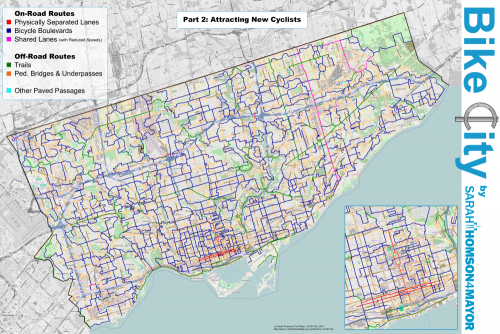 ©View on Flickr
©View on Flickr
A private member's bill has been introduced in the provincial legislature calling for Ontario's rural road shoulders to be paved, providing more breathing room for cyclists. If you are like me and have done a fair bit of riding on country roads you'll be quite pleased if this comes to pass, particularly for the busier country roads with painted lines. Paved shoulders can change a nightmare road to something quite bearable. It's unclear how this would mesh with the Highway Traffic Act's requirement that cyclists - and their "vehicles" - remain in the official lanes and not on the shoulder. Will the Act need to be updated to allow cyclists to ride on the shoulder without fear of being ticketed?
Surprisingly the bill was put forth by Norm Miller, Conservative MPP for Parry Sound-Muskoka, and has the support of the Share The Road cycling foundation, an organization started by Eleanor McMahon after her husband, OPP Sgt. Greg Stobbart, was killed while cycling in Milton, Ont., in June 2006.
Meanwhile the Liberal Transportation Minister Kathleen Wynne expressed interest: "We're very interested in this and have already begun to review the policy," she said. "I think he's right about tourism. But there are going to be places in the province where it makes more sense than others. So we're developing criteria."
If I were the Transportation Minister I would start with the busier country roads with painted lines and narrow lanes, and make sure that these roads are those needed to create closed loops for touring cyclists.
According to the article officials in Iowa estimated the cost of paving the shoulders at over $50,000 per 1.6 kilometres of road (which is pretty damn cheap all things considered). Git 'er done.

